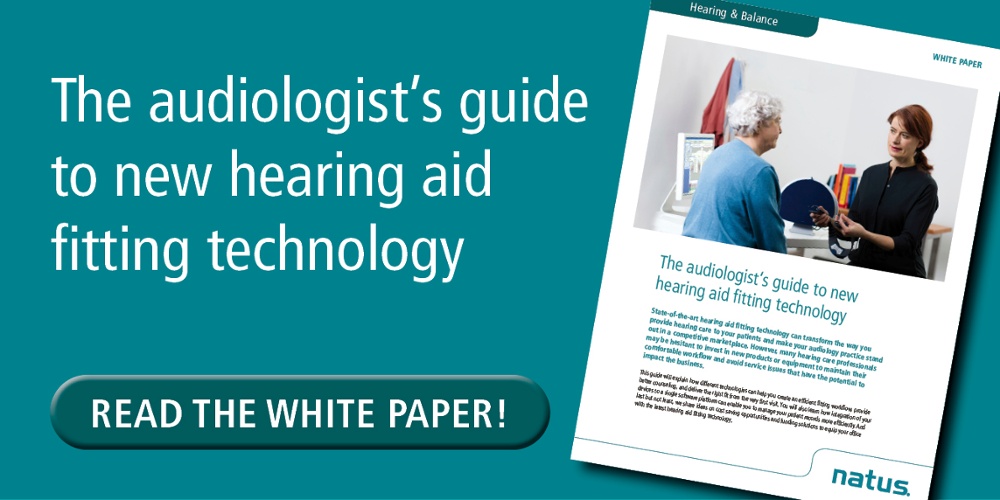In a busy clinic, the more hearing care professionals can improve patient flow, from conducting tests and counseling to issuing and fitting hearing aids, the more you can increase the number of potential patients, reduce wait times, and ensure proper follow-ups. In this article, you will learn five ways to streamline the fitting process and how you can leverage the latest hearing care technology to ensure more comfortable fittings and better patient experiences.

As your time spent with a patient is valuable, you can consider hiring an assistant – or training a current employee – to help with time-consuming tasks that do not require your level of expertise and take you away from selling hearing aids.
For example, an assistant can handle the manual processes, logistics, and work associated with sending ear molds, clean hearing aids and replace receivers instead of sending hearing aids out for repair or other routine tasks not requiring your time. This way, you have more time on your hands to provide quality care and counselling for more patients per day.
Another option to see more patients is to set up a walk-in hearing aid analysis service. This can be done using the Aurical HIT hearing instrument test box, which is a portable USB powered unit that includes all the tests you need to carry out coupler based fitting. Its small footprint and portability makes it easy to move around your clinic, and you can even bring it with you on home visits.
With the coupler values stored in probes, the coupler portion of the real-ear-to-coupler-difference (RECD) does not have to be measured with every patient. In fact, the coupler does not need to be present during the real ear portion. This flexibility provides the opportunity for additional time in your schedule to see more patients.
As patients are less likely to return a well-fitting hearing aid, it may be time to review your current practices for ear mold impressions and consider updating to the latest technology such as 3D scanning to ensure a proper fit.
Instead of injecting silicone material into the ear, hearing care professionals can use laser technology to create 3D scans of the ear and ear canal. Experienced clinicians can scan both ears in just a few minutes saving time and cost of materials. Scanning is less invasive and more comfortable for the patient, who can watch as the 3D image of the inside of their ear appears on the screen.
3D scanning solutions, such as Otoscan, create accurate ear impressions, reducing remakes and returns. The scanned image is converted into a file that can be sent immediately to the manufacturer for a custom earmold, hearing protector or swim mold. Improve delivery times with Otocloud, a secure cloud-based service, to deliver custom products to your patients in a matter of days.
Watch the video below to learn how audiologist Peter Byrom always gets a consistent ear scan with Otoscan.

New developments in hearing care technology can transform the way you provide hearing care. Replace scanning results to medical records and manual data entry with electronic data transfer by connecting your hearing assessment devices with a single integrated solution.
PC-based hearing assessment and fitting devices, like those included in Otosuite software, integrate easily into Noah or into your EMR. Measurement data from otoscopy, audiometry, immittance, otoacoustic emissions and real ear verification can be included in customized reports combining your data from multiple devices.
Working within Otosuite saves time when moving from test to test, without having to stop and switch systems or transfer data. Experience improved workflow efficiency and accuracy. Data follows your patient from start to finish in the entire hearing assessment and fitting process making for a very smooth and professional patient experience.
Audiology has always been a hands-on profession with patients coming to the clinic for different physical appointments such as otoscopy, impressions, fittings, verification, and follow-ups. However, minimizing patient contact is important for patient safety and infection control – especially during times of global health emergencies.
This includes reducing the number of times patients will visit your practice, the time they spend at your practice as well as the number of staff that the patients will encounter during their appointments.
3D ear scanning is an efficient way to ensure minimal patient contact and reduced patient contact time. The fitting process is cleaner and quicker with 3D scanning and with no disposables or otoblock required, it minimizes the risk of cough reflex. This allows you to ensure better infection control for both the patient and your staff.
In addition, the unique 3D scan saves patients from coming back to the clinic for more ear mold impressions. As a hearing aid professional, you only need one scan of a patient’s ear to order multiple hearing aid products, for instance hearing protection from one manufacturer and hearing aid from another. This reduces patient contact and improves ordering convenience for both you and your patients.
036174 RevA
